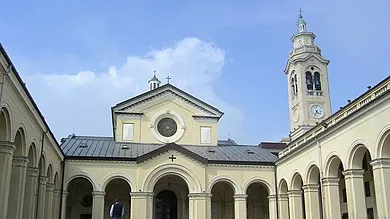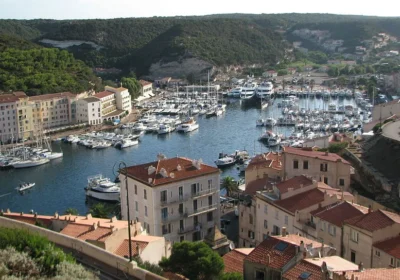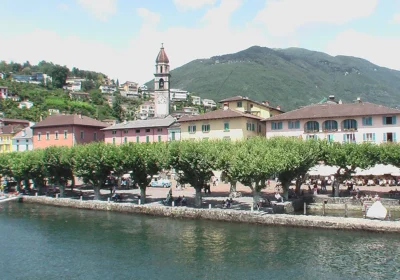These places are considered unique and worth seeing. Pilgrims arriving in Genoa can visit a local shrine: it is located in the Genoese mountains, forty kilometres from the city centre, 800 metres above sea level. In 1490 there was an apparition of the Virgin Mary to a local peasant, after which a church was built there. The sanctuary is considered the most important in Liguria and one of the most famous in Italy. The Genoese call it the Sanctuary of the Protectress of the Virgin Mary, the one who protects Genoa.
If you walk to the temple, you have to go deep into the mountains, but it is worth it – the picturesque river and the Della Guardia towering over it make an incredible impression. The walls of the temple are adorned with pictures and photographs brought here by worshipers to give thanks for their survival. The images show accidents, disasters, tragic accidents. The Shrine of the Virgin Mary on Mount Della Guardia is especially revered by sailors – the pictures of sea storms are from them. The observation deck on the hill offers a magnificent view of Genoa. There is also a stele with a metal circle, which indicates with arrows where the Mother of God appeared to people. Apart from the church itself, the place is well organised for pilgrims and travellers: bars, local restaurants, souvenir shops and many benches. It’s a natural place to sit and think about your innermost thoughts, as well as to admire the beauty of the surrounding countryside: high (for Liguria) mountains on three sides, the sea on the fourth and the city below as if in the palm of your hand.
Stalieno is a rare and beautiful cemetery in Genoa, spread out among the green massif on the mountainside and considered one of the most interesting sights of the city. What the beautiful Angel of Monteverde is sad about and what conversations Friedrich Nietzsche had with his companions while travelling around Italy, only the monumental cemetery of Stalieno, located on the outskirts of Genoa and known all over the world for its highly artistic marble tombstones and sculptures, knows. In the XVIII-XIX centuries, the aristocratic families of Genoa introduced the tradition of placing luxurious tombstones on their graves to immortalise the memory of themselves and their loved ones in marble. Cynical as it may sound, death was the occasion for the creation of beautiful works of art that fill the Stalieno Cemetery like an open-air museum. The Genoese cemetery of Stalieno for 60 thousand graves was opened in 1851 according to the project of the architect Carlo Barabino, who proposed to install in the centre of the necropolis a copy of the Roman Pantheon (“temple of all gods”) with Greek elements, images of the biblical prophets Jeremiah and Job, as well as a 10-metre statue of Venus by the sculptor Santo Varni. By the end of the 19th century, the Staglio Cemetery had become one of the main attractions of Genoa. Among many, Guy de Maupassant, Mark Twain and Ernest Hemingway came here, who later described their impressions with enthusiasm.





